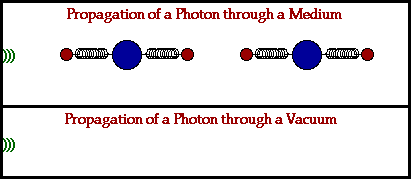That's not what we are discussing; that's because of the entry and/or exit angles - reflection and refraction.
Light passing through a glass block with parallel entry and exit surfaces goes straight through so how can it have been bounced about all over the place by the molecules.
Light passing through a glass block with parallel entry and exit surfaces goes straight through so how can it have been bounced about all over the place by the molecules.


